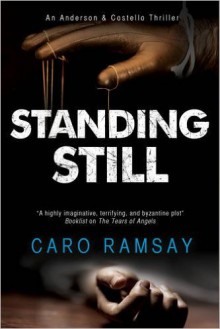
Over thirty years have passed since the publication of The Passage of Power, the first of what Robert Caro envisioned would be a three-volume biography of America’s 36th president. This, his fourth volume, ends in the first months of his presidency, and his assertion that this is the penultimate volume is a little hard to swallow given the thoroughness he has covered Johnson’s life even before reaching his time in the White House (with a third of this book’s 700+ pages chronicling just the first four months as president). Yet Caro has sacrificed brevity for a detailed portrait of irony in his depiction of a master of political power who finds himself deprived of it.
Caro begins with Johnson at the height of his success in the Senate. Still only in his second term, he had taken the weak position of Senate Majority Leader and turned it into the second most powerful position in national politics, thanks largely to his enormous personal and legislative abilities. But Johnson had his eye on an even larger prize – the presidency itself, an office he had aspired to for decades and which in 1960 seemed to many to be his for the taking. Yet Johnson hesitated to commit himself to the race, fearing the humiliation of a defeat. This created an opening that John F. Kennedy eagerly exploited. With his brother Robert collecting commitments in the west – a region critical to Johnson’s chances – Kennedy outmaneuvered the Texas senator, demonstrating just how completely Johnson had misjudged his opponent.
Yet for Johnson a new opportunity presented itself when Kennedy offered him the vice presidential nomination during the convention. For Kennedy, the choice was an obvious one, as Johnson’s presence on the ticket offered Democrats a chance to reclaim the Southern states lost to Dwight Eisenhower in the two previous elections. Johnson’s reasons for accepting are less clear, though Caro describes Johnson’s realistic assessment of his odds as vice president of assuming the presidency in his own right, as well as his belief that “Power is where power goes,” a statement that demonstrates his conviction that he would retain his control over the Senate even as vice president.
Johnson was soon disabused of this notion. Blocked from maintaining his position in the Senate’s Democratic caucus and denied any real responsibilities by the Kennedys, Johnson seemed to wither from the absence of power. For all his failings it is hard not to sympathize with the man in these chapters, who works to ingratiate himself with the Kennedys through expensive gifts and obsequious letters. Yet flattery and jewelry did little to improve his standing in the administration, while the growing scandal surrounding his protégé Bobby Baker was exposing the vice president to increased scrutiny of his business dealings. Though Caro doesn’t press his case any further than the evidence allows, his description of the mounting investigations in the autumn of 1963 suggests that Johnson’s position on the ticket the next year was in jeopardy as he left with the president for a campaign trip to Texas.
All of this changed in Dallas in a matter of minutes. Caro’s chapters on Kennedy’s assassination and Johnson’s assumption of the presidency are among the best in the book, as they convey the sense of bewilderment, tragedy, and sadness which stained that day. Here we see Johnson’s abilities employed to their fullest to reassure a shocked nation of the smooth transition of power. Within days of Kennedy’s funeral the new president took charge of his predecessor’s stalled legislative agenda, working to pass a tax cut bill and civil rights legislation that few expected would become law. Here Caro exploits the numerous telephone conversations the president secretly recorded to depict Johnson’s use of political power, as he threatened, cajoled, and wooed senators and representatives in an effort to attain his goals. The book ends in March 1964, with Johnson fully settled into his office and with the challenge before him of election in his own right, a challenge that – if successful – would complete his journey from the Texas Hill Country to the highest office in the land.
As with his previous volumes Caro has provided a meticulous, painstaking study of the life and career of one of the most fascinating men ever to occupy the presidency, a book that measures up to the high standard set by his earlier works. His errors are few and are easily forgiven in a narrative that engages the reader fully and manages to make the minutiae of legislative maneuvering into entertaining reading. Given Caro’s track record, it may be too much to hope that the next volume – final or not – will be published more quickly than this one, but regardless of how long it takes, if it is anywhere near as good as this one it will be well worth the wait.


 Log in with Facebook
Log in with Facebook 

















